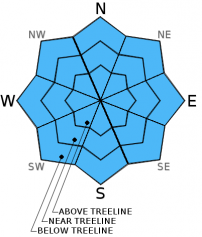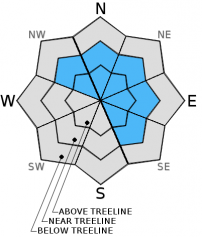| Friday | Friday Night | Saturday | |
|---|---|---|---|
| Weather: | Rain | Rain turning to snow | Snow |
| Temperatures: | 35 to 42 deg. F. | 22 to 29 deg. F. | 28 to 34 deg. F. |
| Mid Slope Winds: | Southwest | Southwest | West |
| Wind Speed: | 20 to 35 mph with gusts to 60 mph | 15 to 30 mph with gusts to 50 mph | 15 to 25 mph with gusts to 40 mph |
| Expected snowfall: | Rain: .5 to 1.5 | 6 to 12 | 4 to 8 |
| Friday | Friday Night | Saturday | |
|---|---|---|---|
| Weather: | Rain and snow | Snow | Snow |
| Temperatures: | 29 to 35 deg. F. | 20 to 27 deg. F. | 21 to 28 deg. F. |
| Ridge Top Winds: | Southwest | Southwest | West |
| Wind Speed: | 55 to 75 mph with gusts between 90 and 115 mph | 60 to 70 mph with gusts to 105 mph | 65 to 75 mph with gusts to 100 mph decreasing to 40 to 45 mph with gusts to 70 mph in the afternoon |
| Expected snowfall: | 5 to 10 | 8 to 14 | 4 to 8 |

























